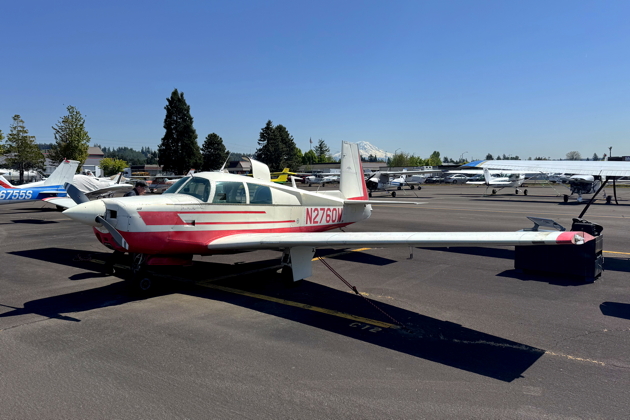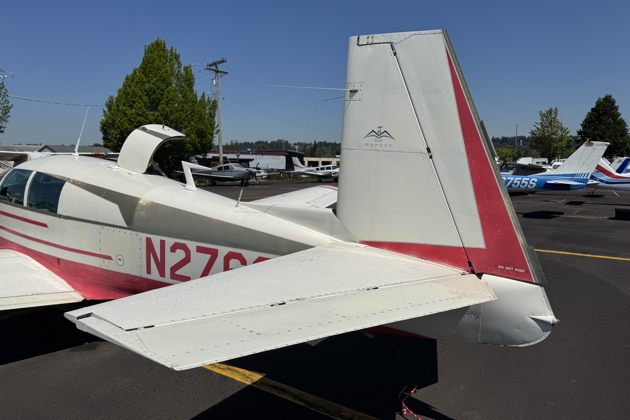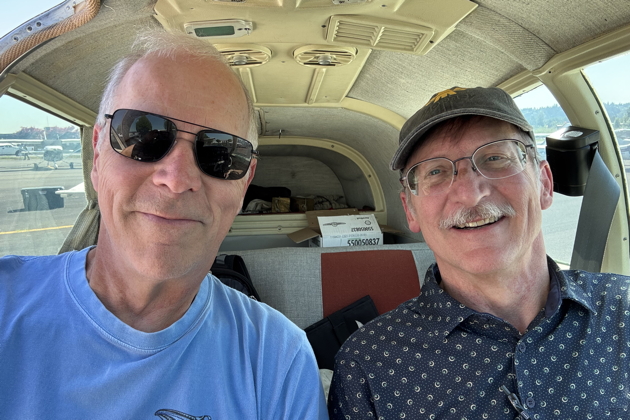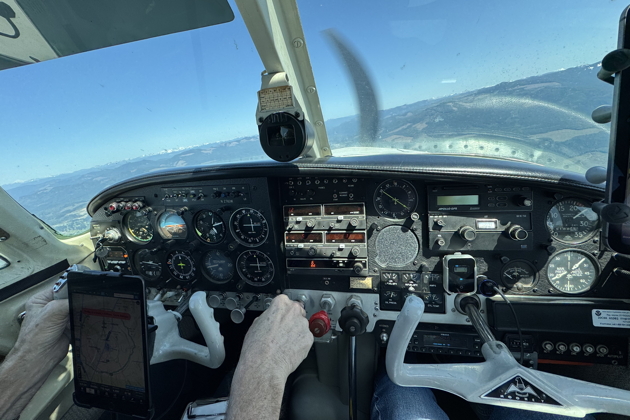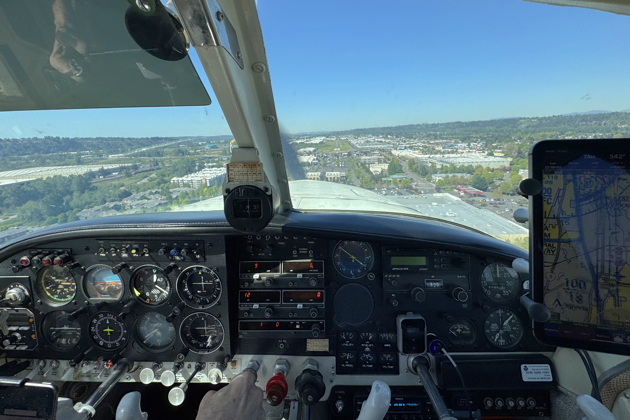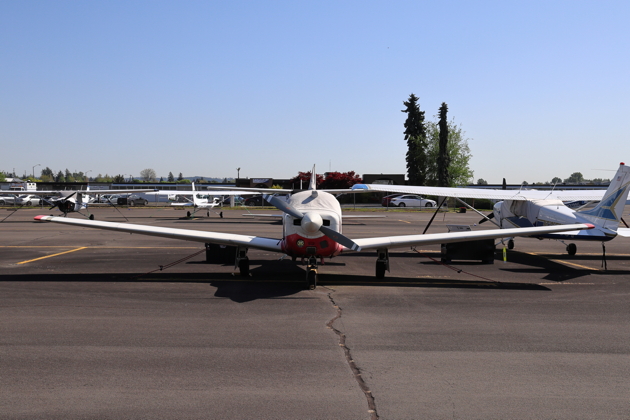FlightLog Archive
∟Aircraft Flown
Mooney Time - May 2025
Many years ago, I was sitting F-15 alert at two different locations - Minot, ND and Holloman AFB in Alamogordo, NM. We swapped out three pilots a week to and from Holloman, initially using our two-seat F-15Bs, then using airline flights to complete the weekly swap out. I looked for a way to complete the swap by using a private rented aircraft, both to get some flying time for our pilots, and also to avoid airline 'cattle car' passenger flying. I worked out a checkout program with the Fixed Based Operator at the Minot civilian airport, who suggested a Mooney would work well for our weekly cross-country, since it was fairly fast and relatively inexpensive to rent for the weekly missions. I let one of the other squadron pilots get the first Mooney checkout, while riding along in the backseat, getting ready for my turn in the left seat. Unfortunately, higher headquarters decided to cancel the program just as I was to start my checkout flight. No Mooney pilot-in-command time back then!
Recently, my friend and Cessna 150 owner Chris, who I had been providing instrument training, decided he needed a more capable cross-country and passenger-carrying option than the venerable Cessna 150. After a lot of aircraft evaluations, he found a Mooney that was available and fit his mission, and asked if I could help get him checked out. Although I have flown over 100 different aircraft types, the Mooney had eluded me. With over 11,000 total Mooneys produced, I felt it wouldn't be hard to find another local Mooney for an initial checkout. I was pleasantly surprised, while parking my Warrior after a flight at my Auburn, WA home base, to find out that Bob was the owner of the M20E parked adjacent to my aircraft at Auburn, and he graciously offered me some time in his bird. Aviation is definitely a small, interlinked, generous community.
Over 11,000 Mooney M20 aircraft in total have been produced across three production runs, starting in 1955 and ending in 2019. The M20E Super 21 was introduced in 1964 as a higher-powered version of the Mark 21, powered by a fuel-injected 200HP Lycoming IO-360-A1A engine. The M20E received the 'positive control' autopilot system in 1965, along with a retractable entrance step, improved nose gear door closures, new bucket seats with recessed arm rests, improved cabin ventilation, and a ram air power boost to improve high altitude performance. 1,264 M20Es were built.
Bob led me through a thorough pre-flight and description of his Mooney and the systems unique to his bird. There are no shock struts on a Mooney’s landing gear, nor sprung steel landing gear legs nor bungee shock absorbers. Al Mooney designed all three gear legs with a stack of rubber donut landing gear shock absorbers to take the impact of landing. The rubber donuts were quite noticeable on the exterior walk-around, but functioned well, according to Bob. I had remembered the cockpit years ago being fairly tight, and was surprised at the 'normal' cockpit width I felt when settling into Bob's Mooney. We took off from Auburn's runway 35, where I immediately enjoyed the ample power from the IO-360, noticeable in the good climb performance. The landing gear retraction was a simple process using the prominent 'Johnson Bar' just below the cockpit main panel between the front seats. Bob's Mooney felt smooth in pitch, with a slightly heavier aileron feel than my Warrior, feeling more like a Cessna 182. In steep turns, coordination was aided by the ailerons having a differential linkage. Aileron up travel is greater than down travel, helping minimize adverse yaw when they are deflected, kinda cool.
Stall warnings and recovery are conventional. With the IO-360 power and clean configuration with the gear up, the M20E does like to cruise and climb fast. When in the descent for landing, you need to keep your speed under control, monitoring the 120 MPH gear speed. Landing gear retraction/ lowering is easy and obvious, with the large 'Johnson Bar' handle throw. Flaps can be deployed below 100 MPH, and Bob suggested 90 MPH on base and 80 MPH initially on final, which all worked great for speeds. Landing is a no-brainer, with a slightly lower flare height that needs to be seen just once. I felt very comfortable after only an hour in-flight! Bob, thanks for finally allowing me some 'Mooney Time', it's a sweet flying machine!
 KASPRZYK
KASPRZYK